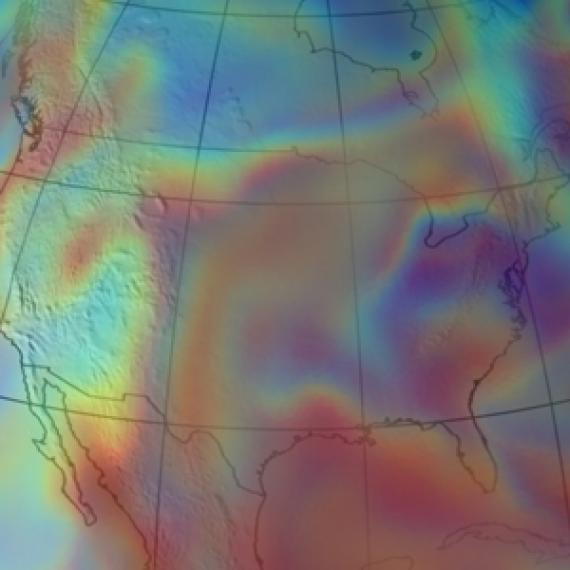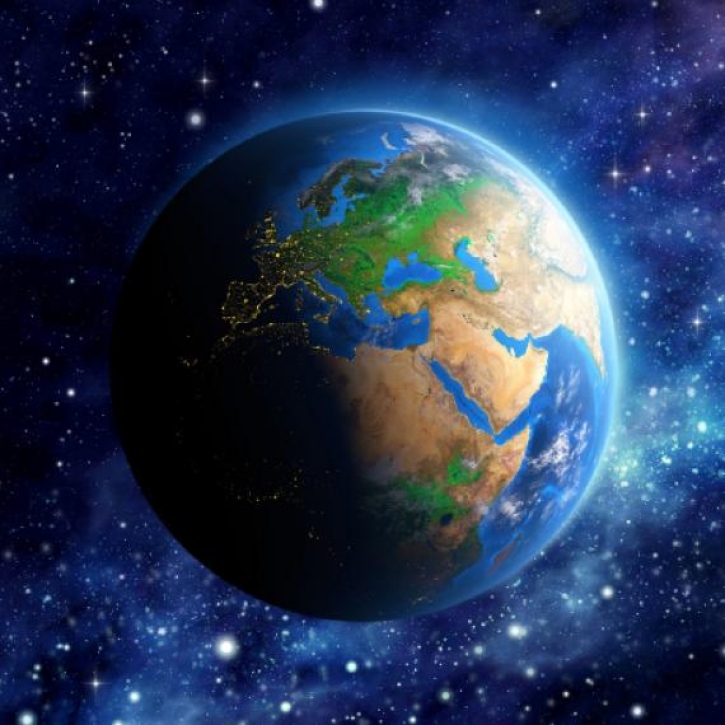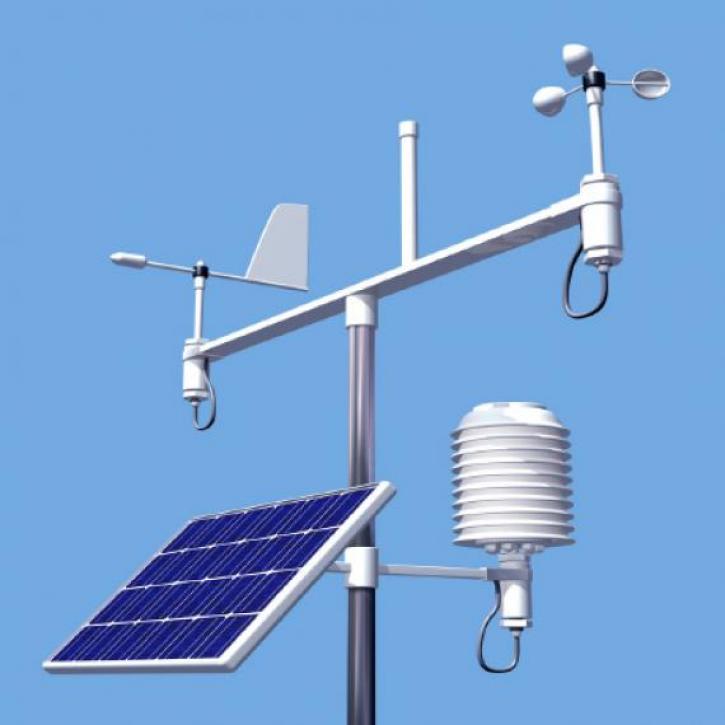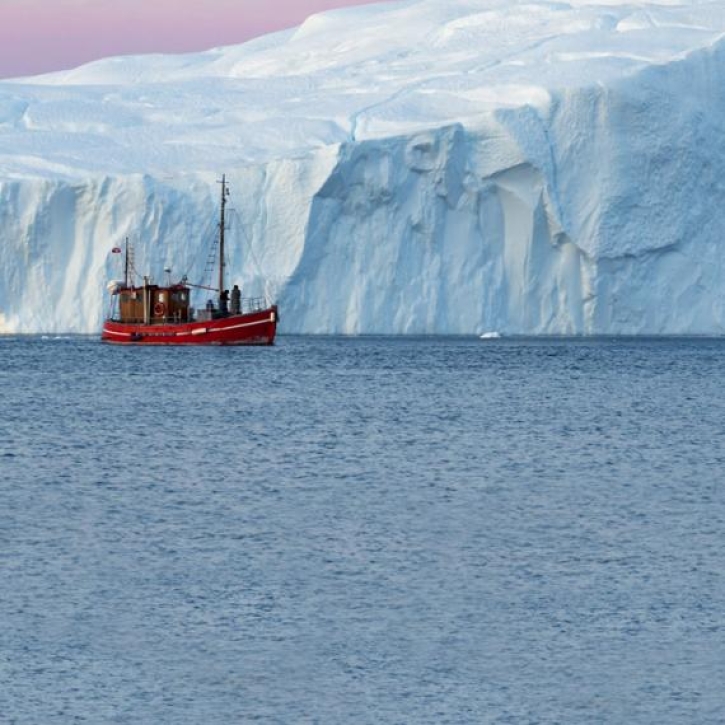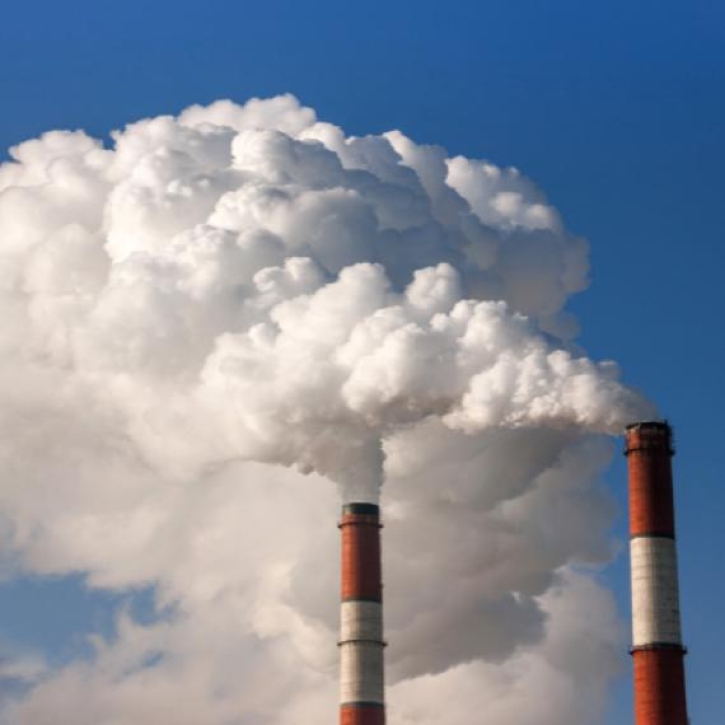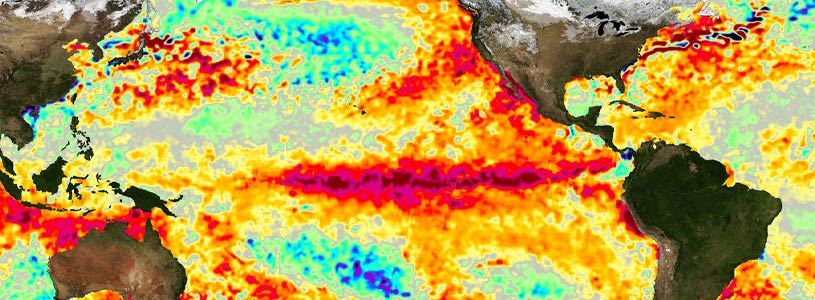

El Niño and The Southern Oscillation (ENSO)
Professor Collins holds a Joint Met Office Chair in Climate Change, College of Engineering, Mathematics and Physical Sciences (CEMPS), University of Exeter, UK.
The temperature of the sea surface in the Eastern Tropical Pacific is usually around 27°C – pretty balmy by UK standards but reasonably cold for the tropics. Cooler waters from deeper in the ocean rise up in the Eastern Pacific, bringing nutrients that feed a thriving ecosystem. Every so often these cooler sea surface temperatures (SSTs) are replaced by warmer waters and this has a profound influence, not only on the number of fish that South American fishermen can catch, but also on the atmospheric circulation above and the oceanic circulation below.
Normally the cold SSTs in the East go along with warm SSTs in the west, which underlie a large area of moist atmospheric convection. This ‘warm pool’ convection is accompanied by strong easterly trade winds forming an atmospheric circulation named after the 19th Century scientist Sir Gilbert Walker – a past president of the Society. Below the surface of the ocean, the trade winds cause upwelling of cold ocean water from below in a process known as Ekman pumping. When this climatological situation is disturbed, this sets in a chain of events. If the trade winds weaken, then the warm SSTs in the west can move towards the east, bringing with them the atmospheric convection and further weakening the trade winds (a feedback first described by Jacob Bjerknes). The weakened trades also lead to reduced upwelling of cold water in the ocean, further enhancing the warm SSTs in the east and causing the ocean thermocline, a sharp vertical gradient of temperature around a few hundred meters below the surface, to become more horizontal in comparison to its normal state of being deeper in the west compared to the east. This is what we now call an El Niño event. The Walker Circulation in the atmosphere is weakened and displaced and, if we measure this by examining the surface pressure across the Pacific, traditionally by differencing the pressure records from Tahiti and Darwin, we see what Walker called the Southern Oscillation. Together they form the El Niño Southern Oscillation (ENSO).
The Climate Science Communications Group (CSCG) released a briefing paper (issue 5) synthesizing the current knowledge about the El Niño Southern Oscillation. It covers following topics:
- What is El Niño?
- What causes an El Niño event?
- How do we measure El Niño?
- Impacts of El Niño and La Niña
- How does El Niño affect global temperature?
- El Niño and climate change
Podcast Episode 8 - El Niño: Interview with Adam Scaife
The Society invited Professor Adam Scaife for an interview about the El Niño Southern Oscillation. He works at the Met Office, where he leads their monthly to decadal prediction work while carrying out personal research on climate variability.
Listen to all our other podcasts



